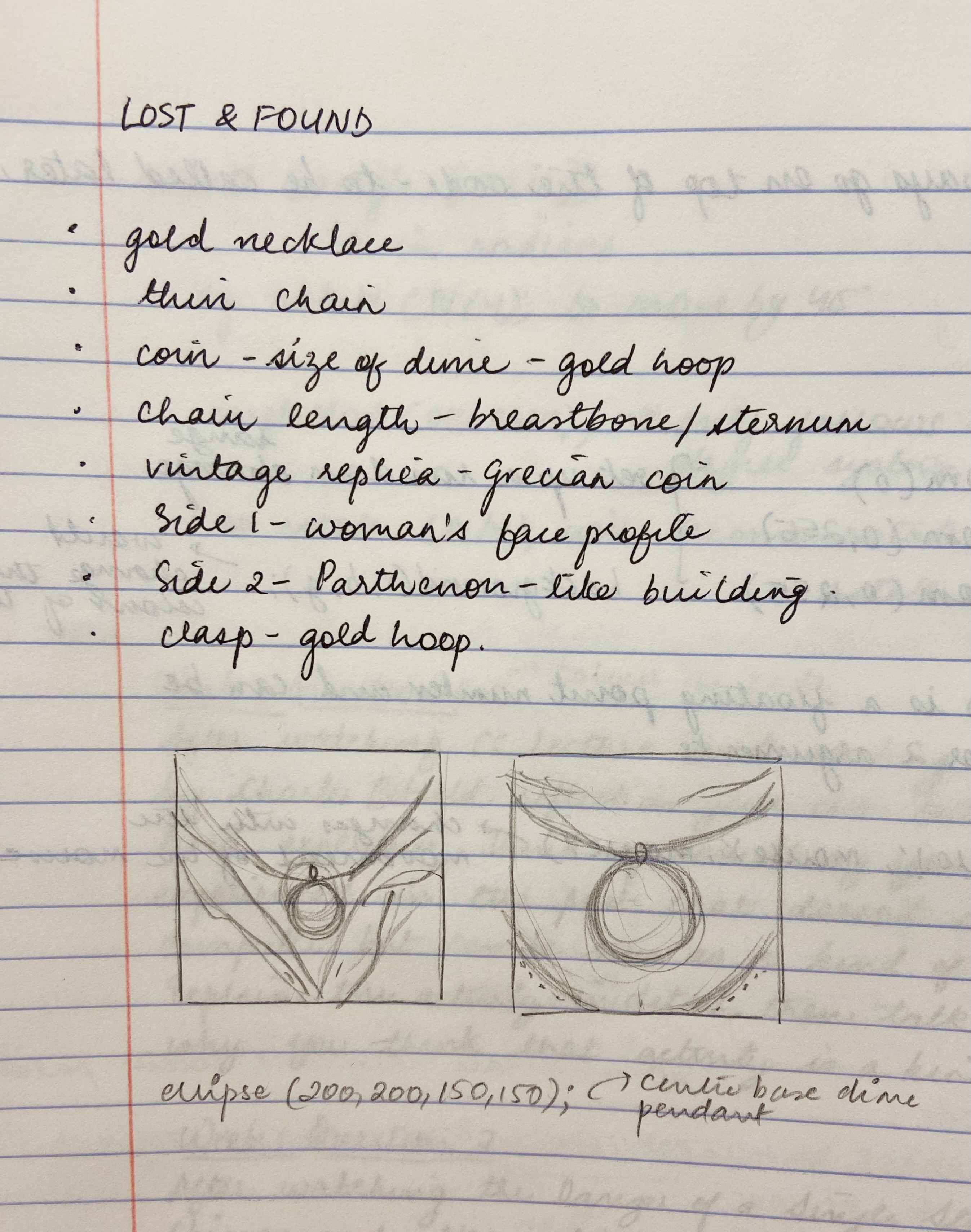#1 Lost & Found
Mariel's Gold Chain
Move around to explore!
Sketch description: A close-up illustration of a girl's collar and coin-shaped pendant. As you move the mouse from left to right, you can see the pendant flipping, displaying the Parthenon on one side and a portrait of a lady on the other.
You can view my code here:)
Description
My partner Mariel described her lost item: "I lost a gold necklace. It was a thin chain and it had a coin that was about the size of a dime attached to a small gold hoop that looped it onto the chain. The chain went to just above the breastbone. The coin itself was a vintage replica of a Grecian coin. It had a woman's face profile on one side and a building that looked like the Parthenon on the back. The clasp was also a gold hoop."
Design Process
I began listing out the various features of the object and worked on a few thumbnail sketches to figure out how I wanted to frame my composition. To give my composition more context, I decided to add parts of a shirt and the collar to depict the chain being worn by someone.

I tried breaking down the complex forms into smaller simple shapes using 2D primitives like rect(), quad(), triangle(), ellipse(), circle(), arc() and line(). After working on the basic structure/framework, I began working on the colour and rendering by building in the details step by step like adding shadows, midtones and highlights. I also worked on the other side of the pendant - the profile view of the woman. I tried taking my sketch further by displaying the opposite facilitated by a flip. After trying to figure this out on my own, my friend Munus introduced me to the map() and scale() functions.
Reflection
My partner, Mariel, described her lost object in detail. To be honest, I wasn't expecting such a complex object and was quite taken aback when I read the words vintage, Grecian, profile, woman, etc. Moreover, with this being my first coding exercise, I was quite intimidated! Once I started, I actually began enjoying myself and found the exercise quite addictive. I wanted to add more elements and make the sketch interactive. The process of breaking things down to bare, simple shapes reminded me of my icon/symbol design exercises that I've worked on in the past.
Once I finished, I questioned if Mariel's chain actually looked like this? I was also tempted to ask Mariel: Which view of the Parthenon? Which way is the woman facing? Is the final sketch a result of my own interpretation and familiarity with Greek art? Or is the sketch limited in any way by my knowledge of p5?
Also, it is interesting to see a single object in different languages: first in English (written language), second as a sketch (visual language), and finally as code (programming language). It makes me wonder what other languages I can use to represent the same chain - through sound, symbols, maybe?
Credits
This project was created based on the tutorials provided on the Critical Computation website, and help from my friend Munus.